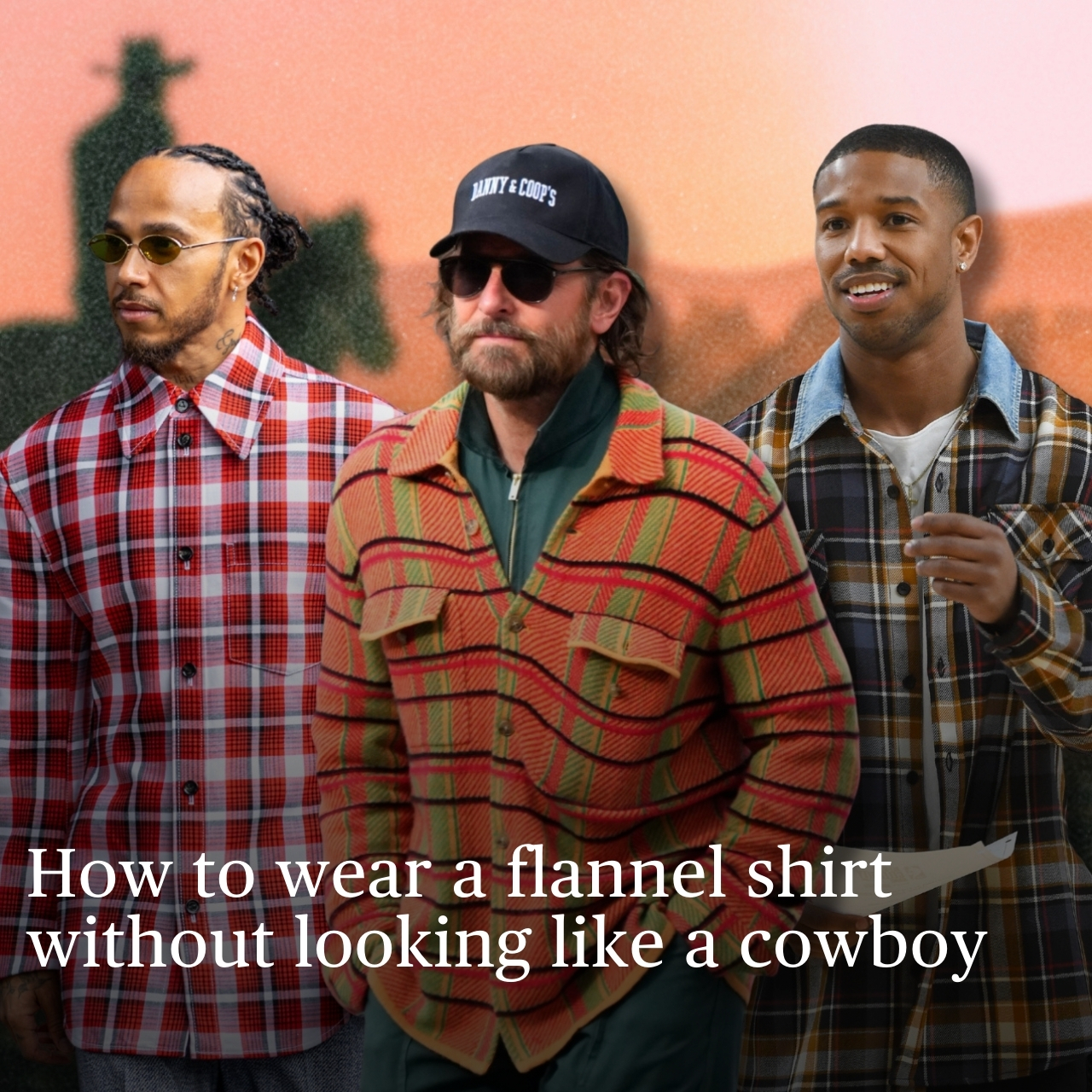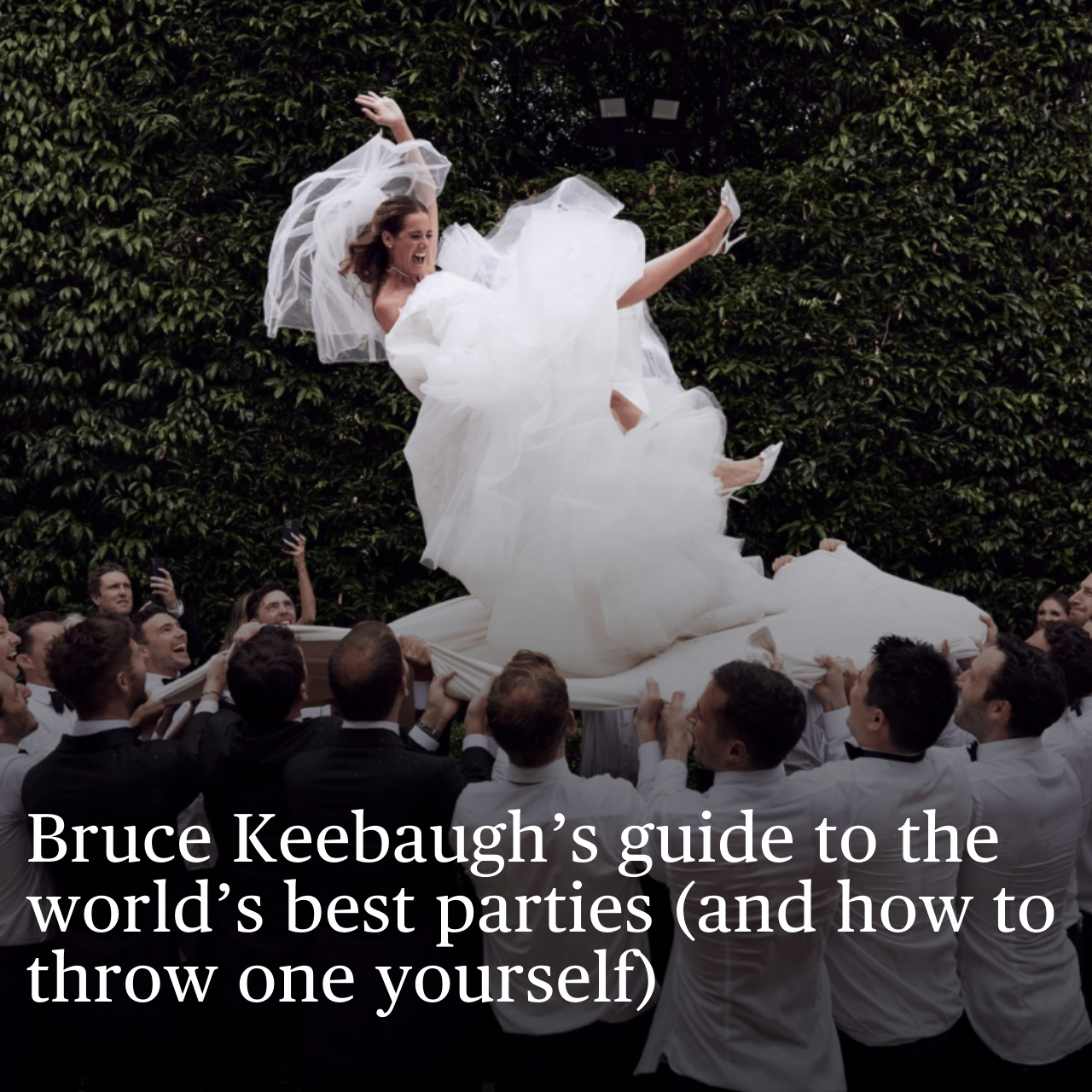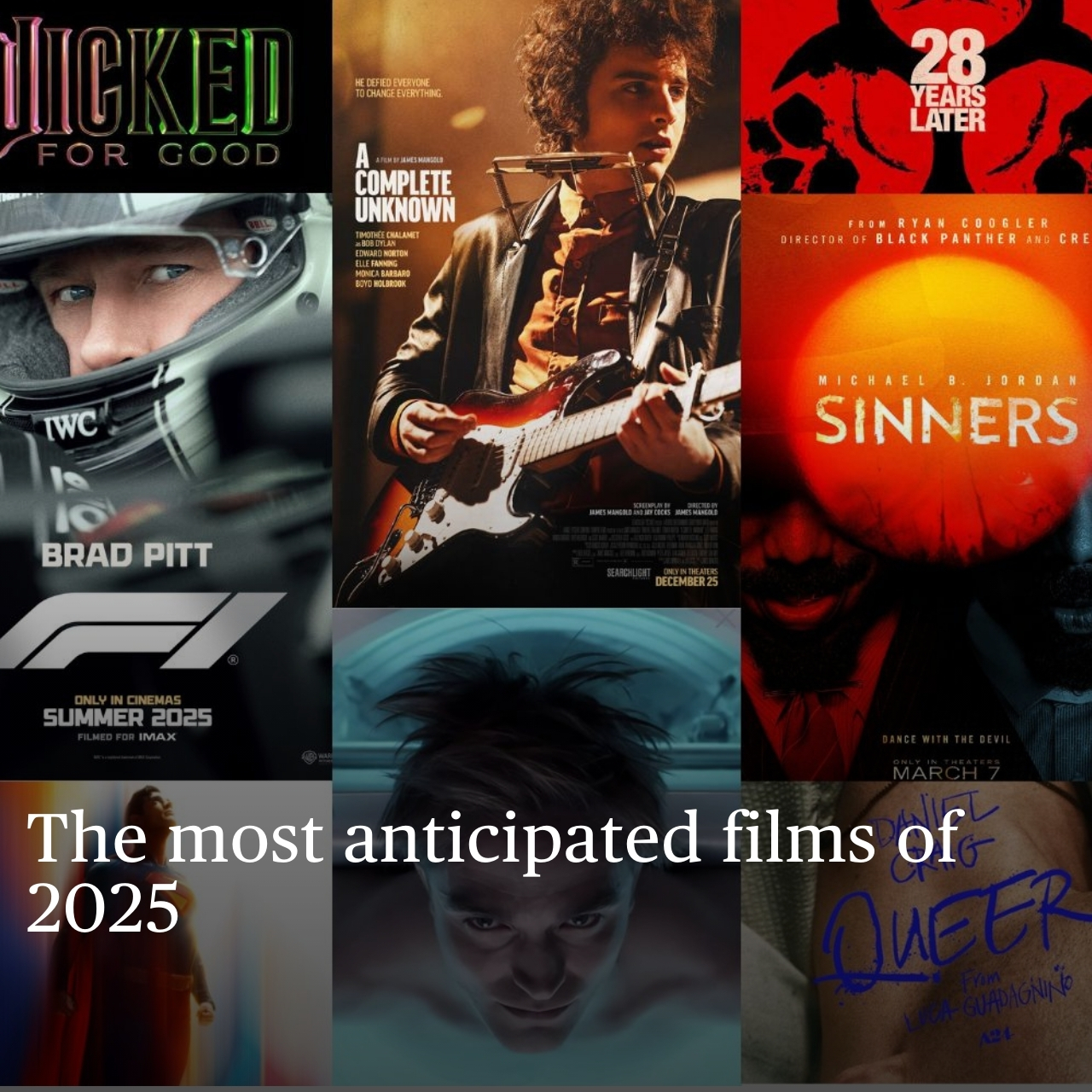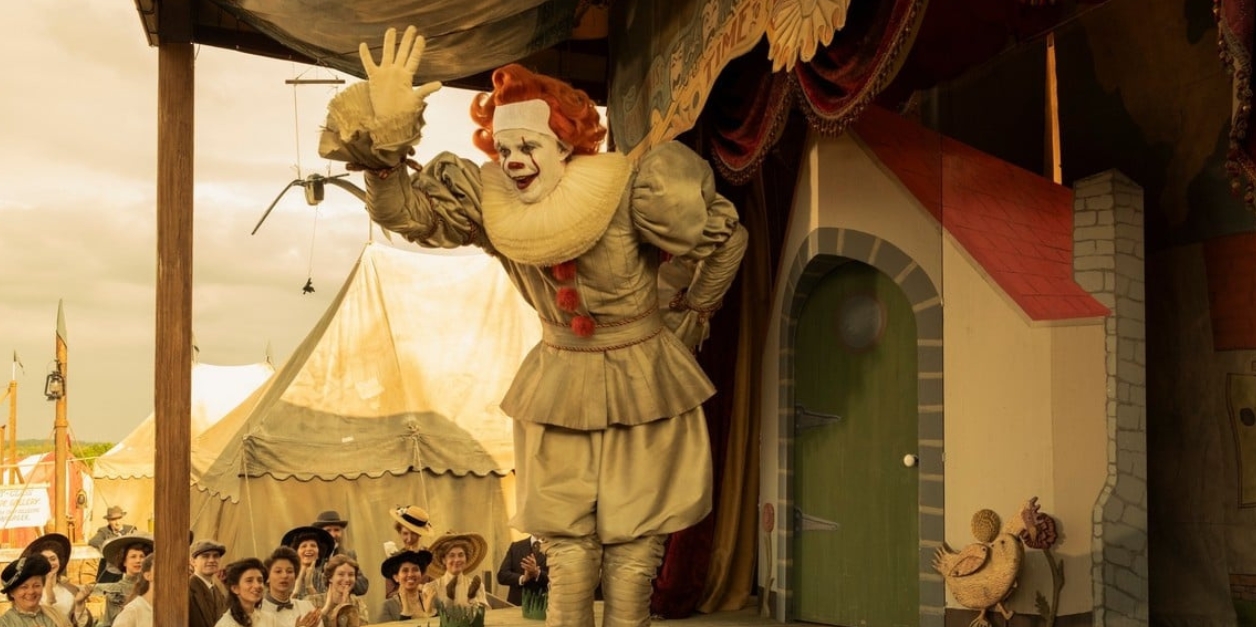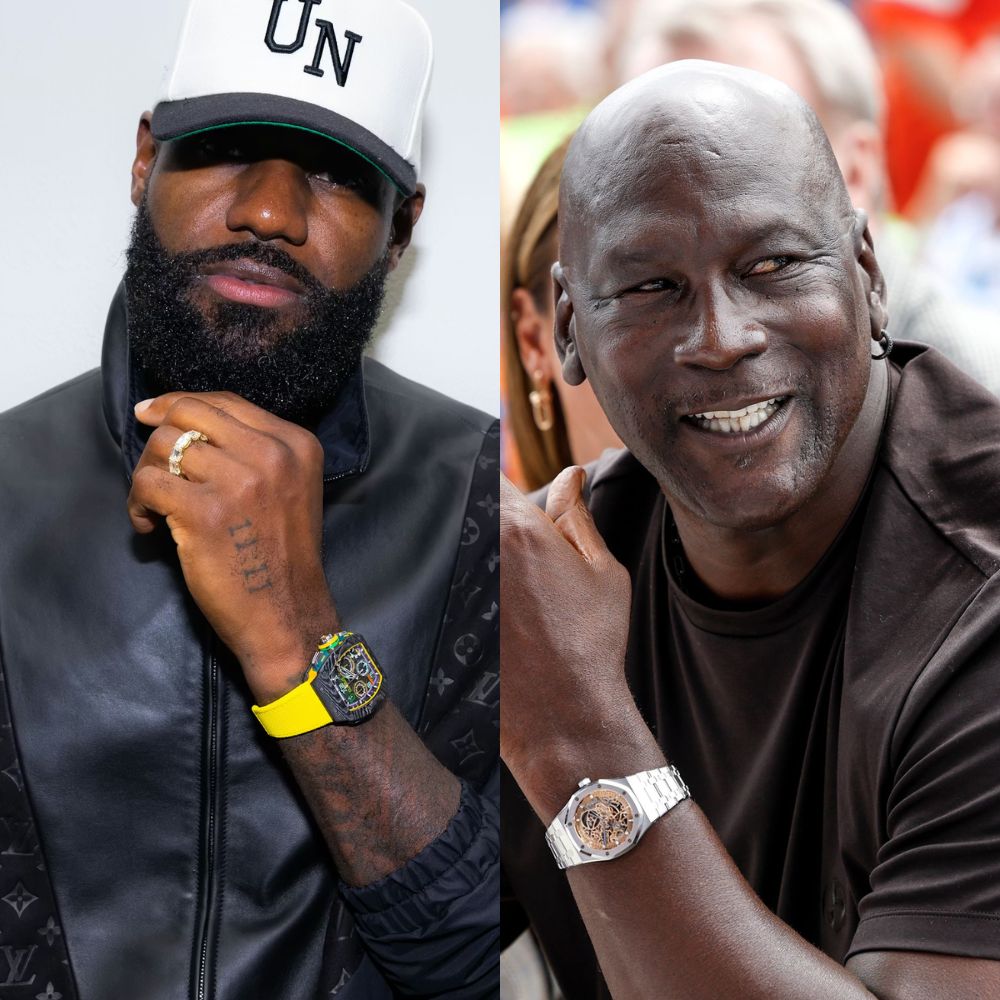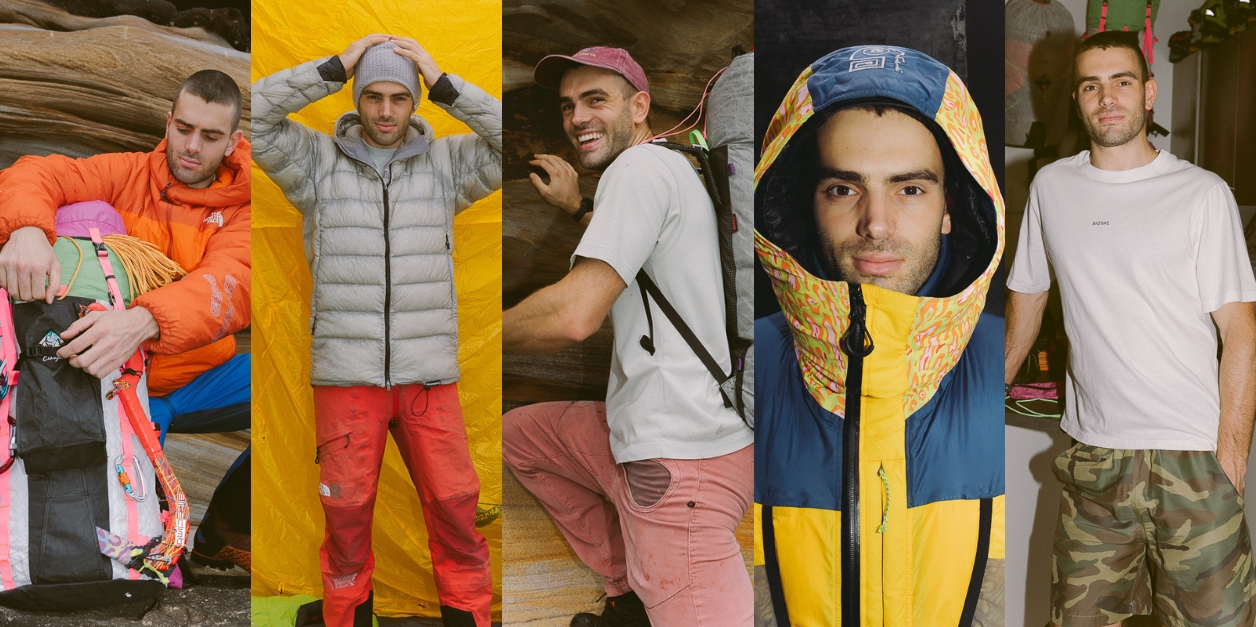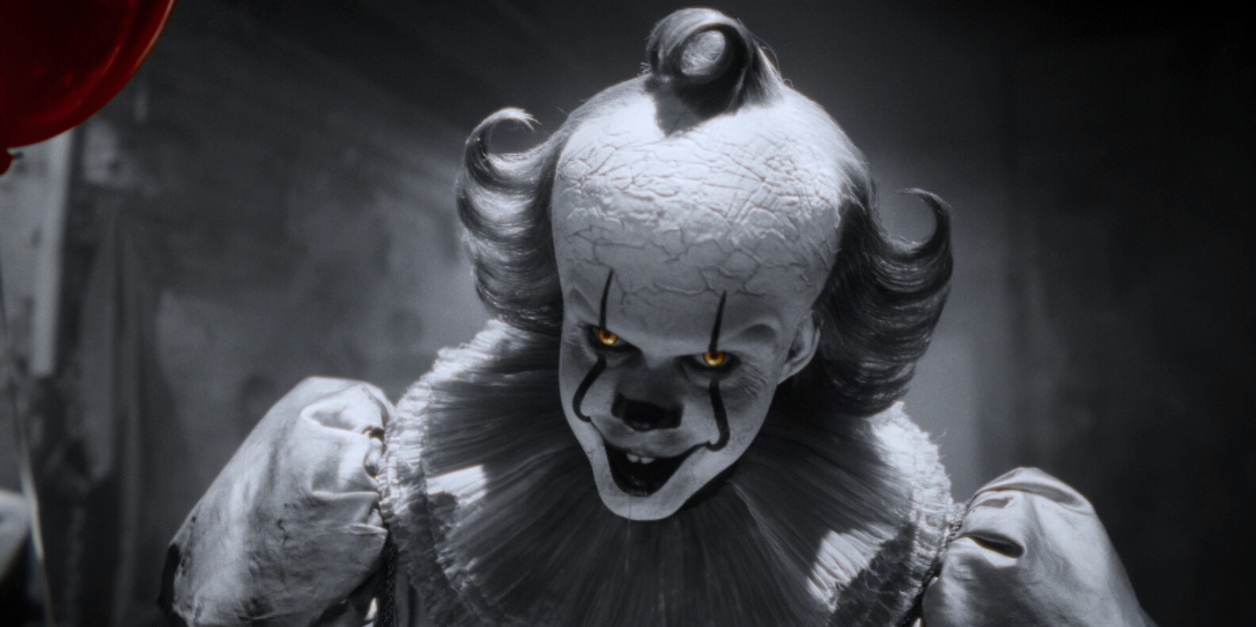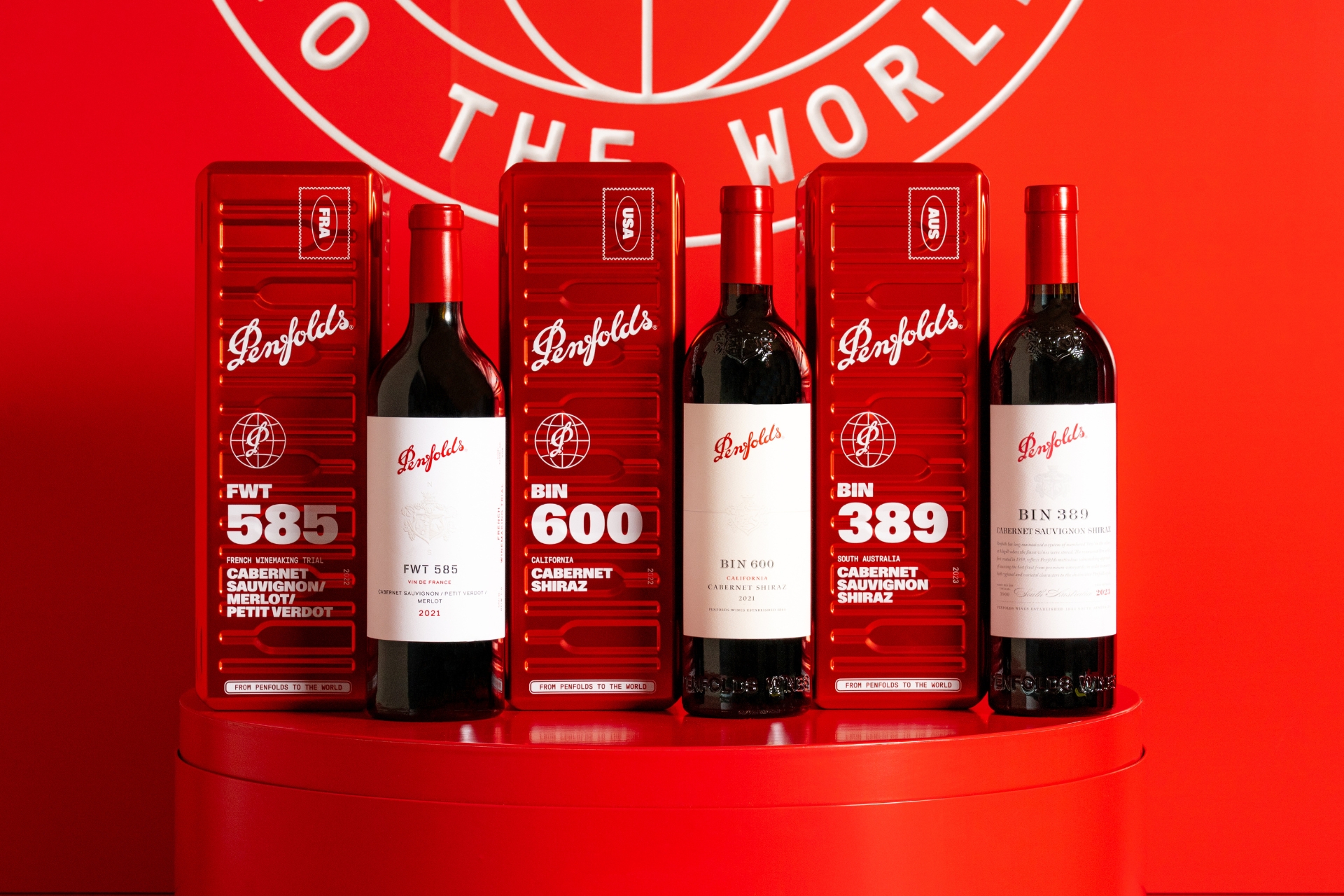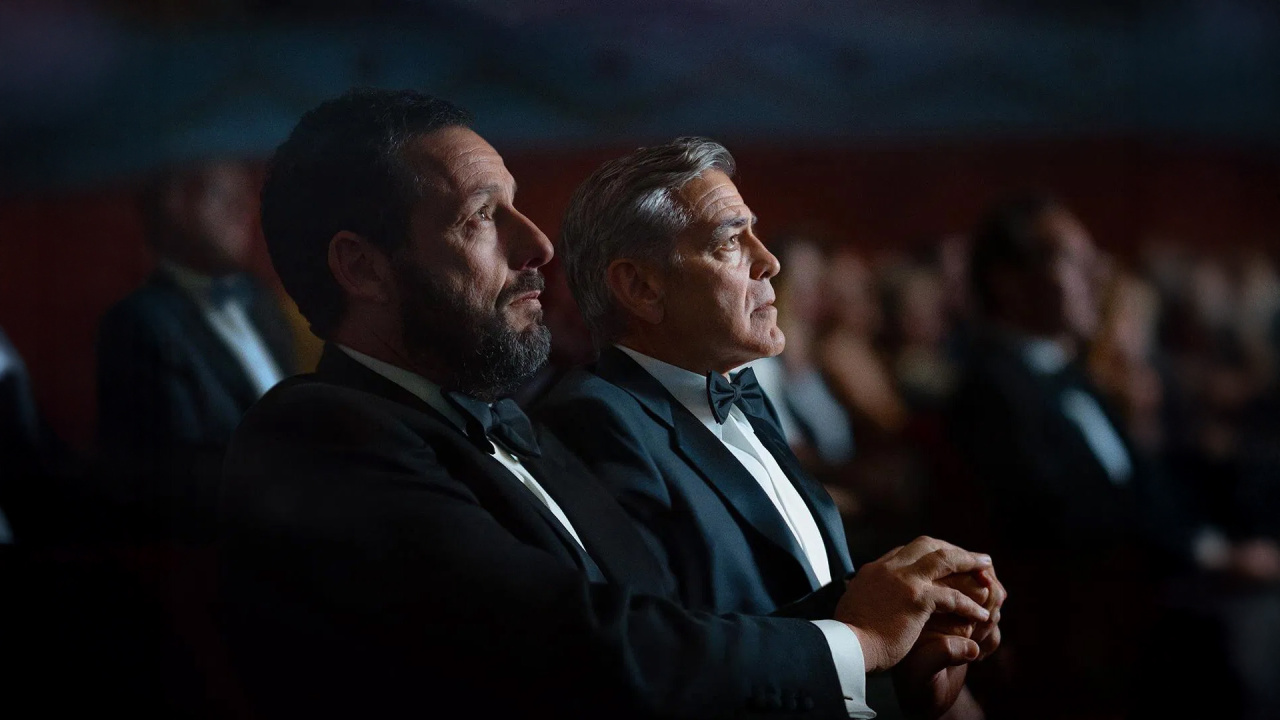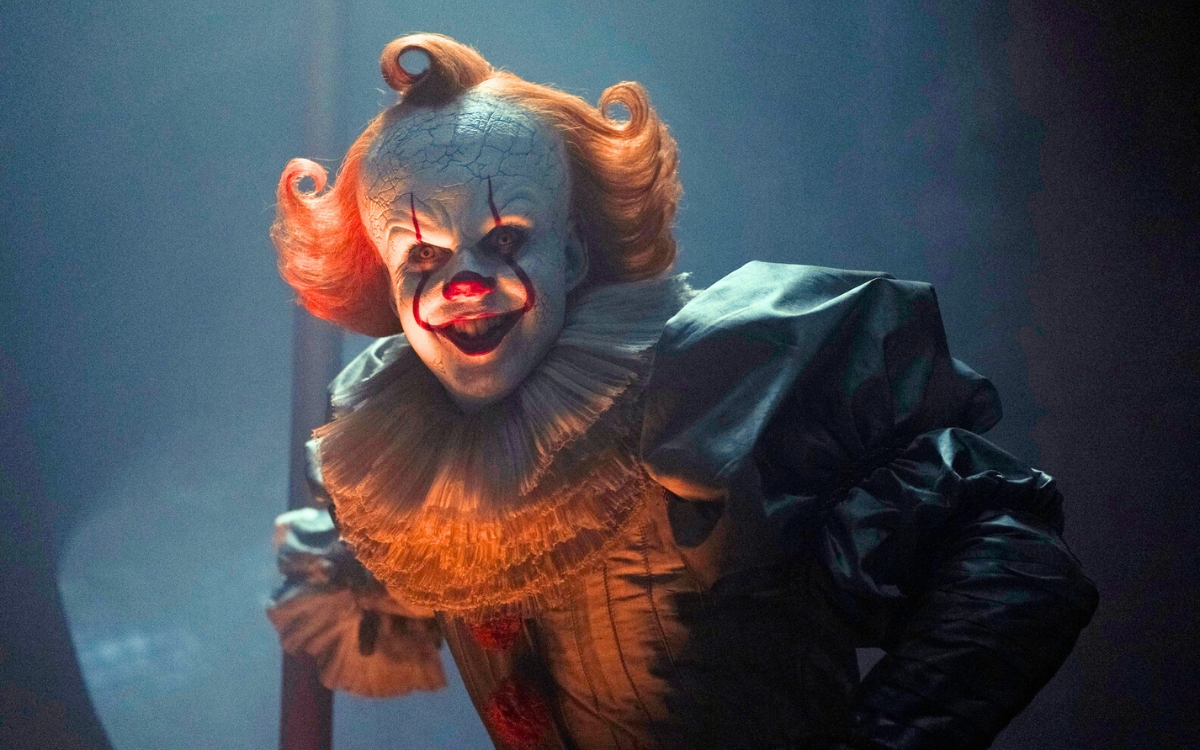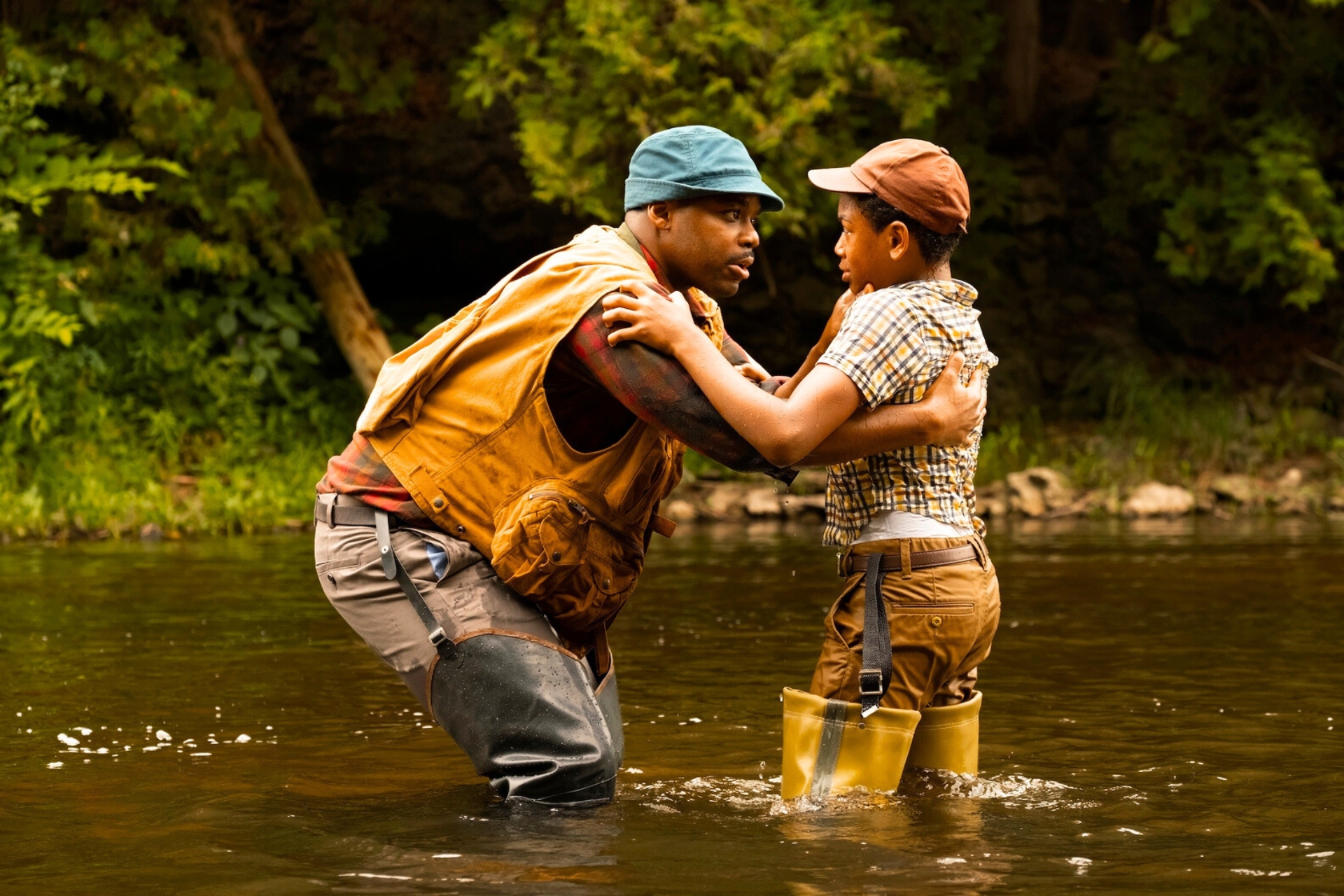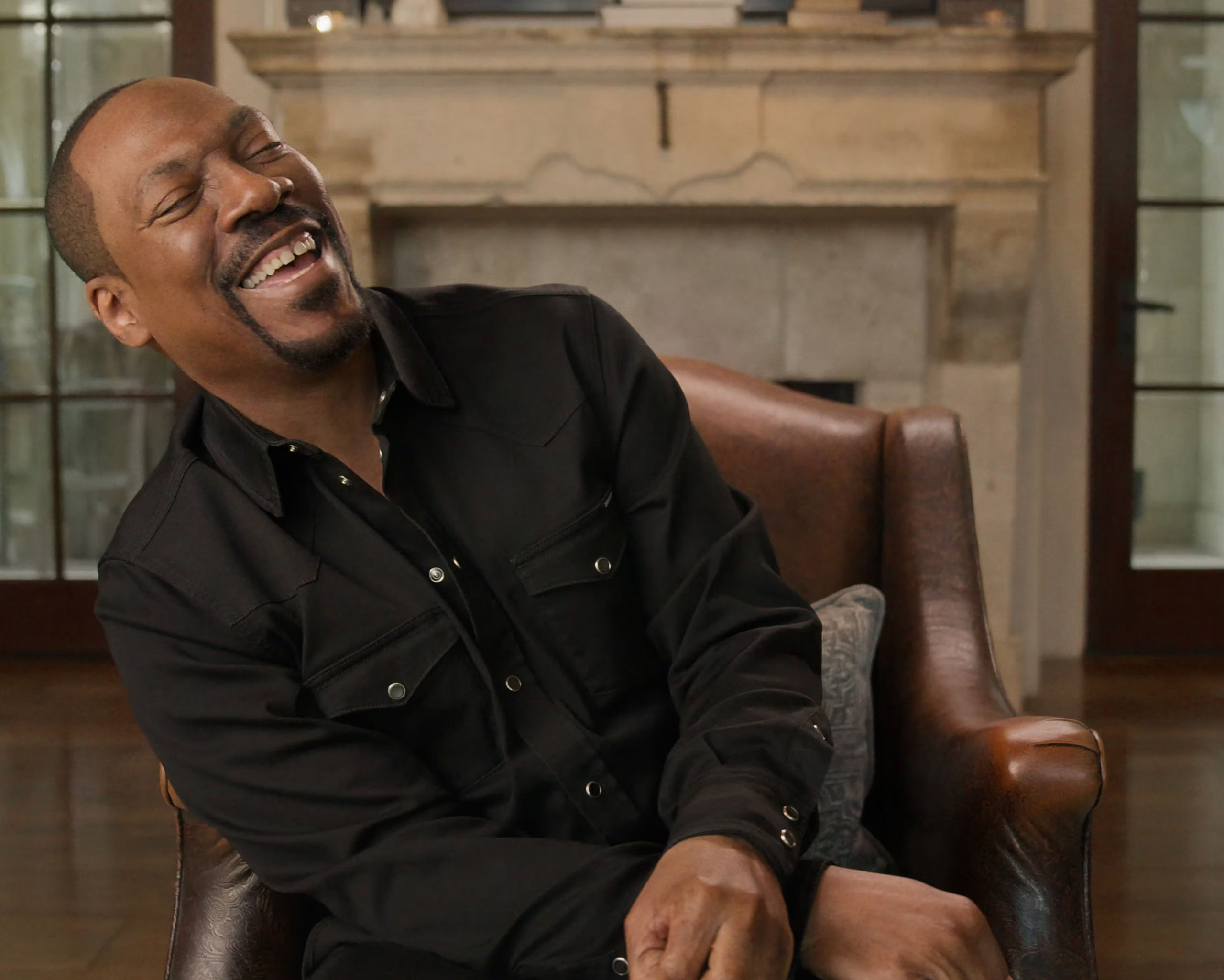Inside the world’s greatest rare Rolex shop: from big money collectors to celebrity super fans
A new book celebrates 30 years of The Vintage Watch Company in London's Burlington Arcade
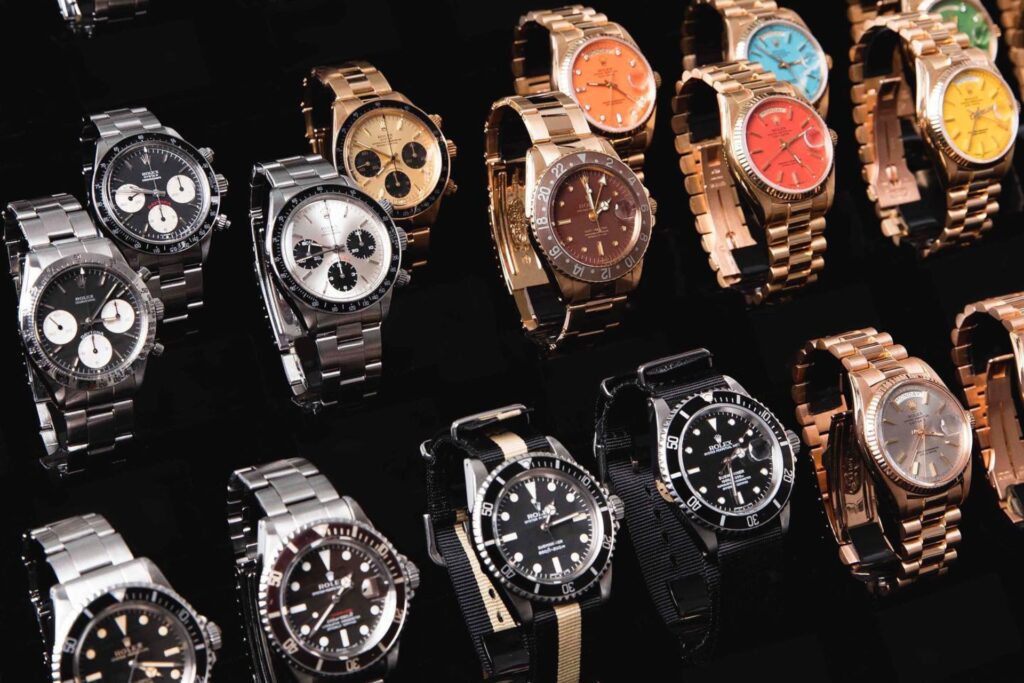
LONDON’S BURLINGTON ARCADE knows how to put on a show.
With its Regency architecture, vaulted glass roof and dedicated guards in frock coats and top hats, it’s tailor-made for the “experience-driven” shopper.
Halfway down, there is one boutique that consistently pulls in more curious onlookers than any other.
Number 24 is home to The Vintage Watch Company – or “the Rolex shop,” as everyone calls it.
Established 30 years ago, it is dedicated to buying and selling Rolex watches from the last century, circa 1910–2000.
Its high, arched windows are permanently and intentionally overfilled with Oysters, Submariners, and GMT-Masters – and, more recently, colourful Stella and stone dial Day-Dates of impeccable rarity and wow factor – meaning there is always a crowd playing “Which one’s your favourite?” and mentally remortgaging the house gathered outside.
These days, everyone goes on about the booming “pre-owned” or “pre-loved” watch market.
Rolex itself, having ignored that audience for years, launched its own “certified pre-owned” scheme in 2022.
But No.24 has been on the case since 1995, preferring the more succinct label “vintage.”
The business is family-run by the Silvers: founding dad John, and his children David and Sara, who have succeeded in their mission to create the largest vintage collection in the world. At any one time, over 2,000 watches are on site.
As befits the job, David Silver is a details guy.
He brought in a professional photographer, Bruce Mackie, from the start – initially to ensure the watches looked their best online. But he soon realised he was also building a visual archive of the extraordinary pieces that were passing through the shop.
Today (6 May), Vintage Rolex – a thumping 432-page collectors’ book of more than 2,000 of those photos – is being released: a new edition of Silver’s bestselling original, which we wrote about in 2000.
As well as new sections dedicated to rare models co-signed by the jeweller Tiffany & Co, “tropical” dials, the aforementioned Stella and stone dials, and some 300 new pictures, the book marks the occasion of the shop’s 30th anniversary.
(Fun fact: it comes in four colourful covers – five if you count the first edition – with a matching Day-Date on the cover. Each one is set to a different day.)
When I dropped by on David Silver last week, the book was already a hit.
“Preorders have exhausted the first print run and a second printing has already been ordered,” he said.
Silver talked to me about the book, his part in creating the booming vintage Rolex market, and the only one of the VWC’s many famous customers he and his dad ever left the shop to see.
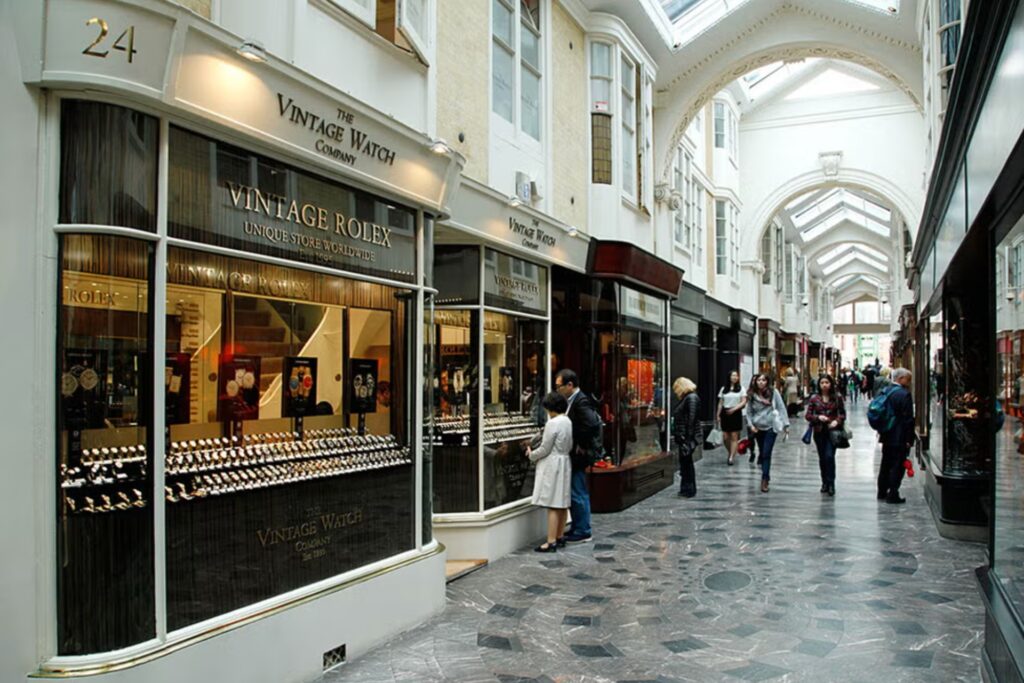
Esquire: What was the vintage market like in 1995?
When my father established [the shop], vintage wasn’t a big thing. He had sold a jewellery business focusing on more modern pieces and started this as a kind of hobby. He began to see there was a bit of a thing starting in the world for vintage. Vintage Hermès was becoming a big thing on the catwalks. The supermodels were just becoming big then, and everything started to focus around vintage. Vintage jewellery was always a thing, but not watches. People were never into old watches at the scale they are now.
So, he thought: how fun would it be to put a counter together of 1920s, 1930s, and 1940s watches. Hamilton, Omega, Patek Philippe, Rolex, Longines, Waltham.
We did everything at the time based on style, so the brand wasn’t as important as the shape for us. We put a very design-led selection together: rectangular watches, round watches, officer’s watches – all that sort of stuff.
And obviously, what began to happen was that Rolex would always outsell everything else because it was so mind-blowing. People were like, “Oh my God, I can’t believe Rolex ever made a watch in a rectangular shape that looked like a Cartier Tank.”
So the eureka moment was: “Well, what if I focus on the one brand, Rolex, and then create the largest collection we can?” And range it as if we were doing a modern brand.
Not “pre-owned” or “pre-loved”, always “vintage”?
Vintage is still the keyword for us. Rolex have got into this market now, but I would say they are in the “pre-owned” market. They focus on a few years old. Not 25 years old.
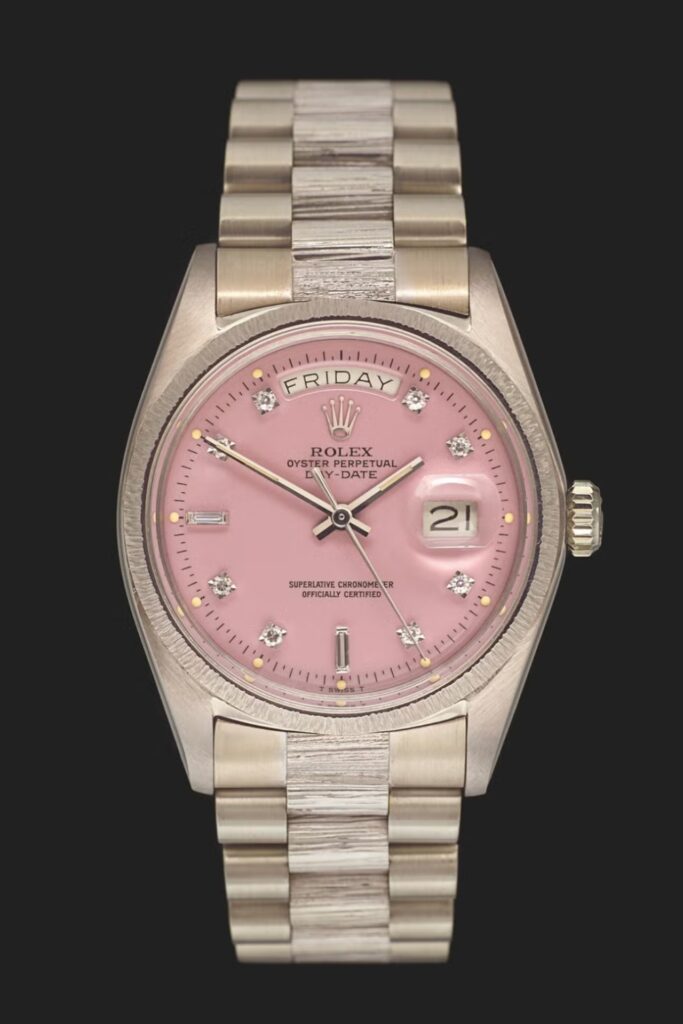
The new book is an updated version of the 2020 edition. What was the reaction like to that?
It was incredible – overwhelming, really. A lot of things coincided at the same time that no one could predict. First of all, Covid. My book was one of the last my publisher printed [before lockdown]. It was signed off in May 2020. We were in lockdown, and I was sitting on my bedroom floor, going through proofs that had been sent to me. I don’t even know how we managed to do it, really – but we did.
And then we had a captive audience. People were at home with nothing to do, and the Amazon market was huge. So, people ordered books. And I was very lucky. At the same time, Rolex launched their Oyster Perpetual and happened to come out with a yellow watch – which was very unusual for them [in 2020 Rolex launched, and soon discontinued, a selection of colourful dials for its Oyster Perpetual collection, in green, turquoise blue, coral red, candy pink and yellow. They were clearly inspired by the Stella dials of yore. The cover of the first Vintage Rolex book featured a yellow Stella dial].
Then I think the quality of photography [ . . . ] and the volume of stock that we could photograph was extraordinary. That’s not common for watch books. A lot of watch books have quite poor photography because ultimately, the watches are not owned or don’t exist in the author’s hands – so they’re just taking images from Getty or photo archives, or wherever. A lot of auction houses provide imagery, but it’s not particularly well done. And those books tend to be more text-heavy.
My book is not a text-heavy book. We do provide a history, but it’s mostly visual – it’s fashion photography. It’s like a lifestyle book, or a book on architecture or interior design. That’s where I pitch it. So, it’s not designed for the absolute watch connoisseur to get loads of information about every reference ever made and all the intricate details. I’m not your man for that.
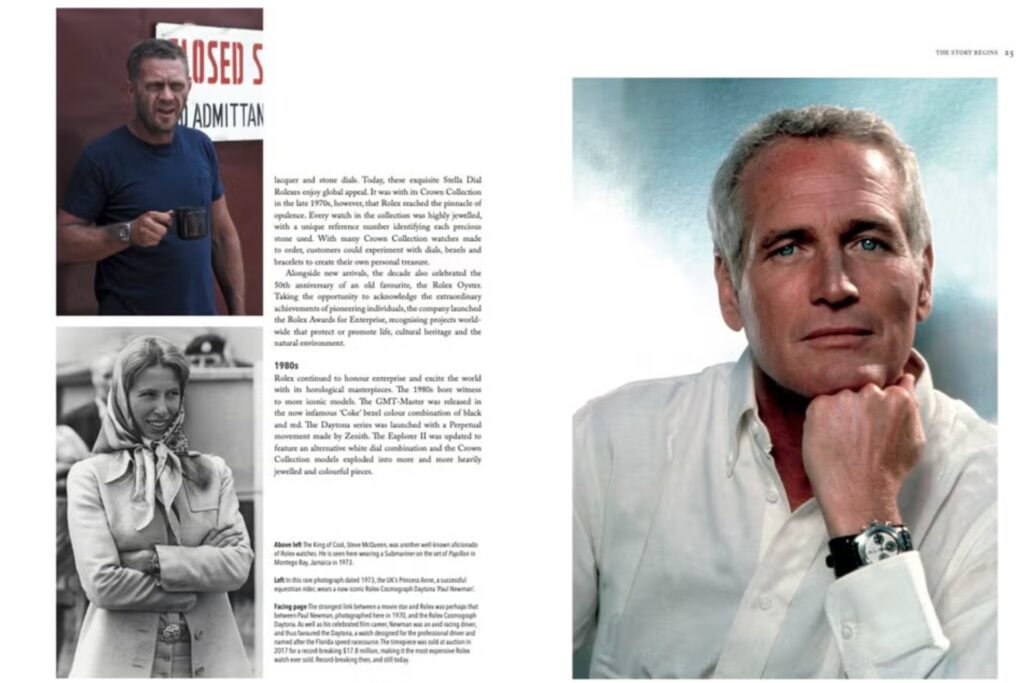
You’ve updated the “famous people’ section at the front.
I tried to go through from the beginning again and put in some notable figures. Eisenhower is quite an iconic image. Elvis. Martin Luther King. Fidel Castro. The Bond section. Honor Blackman is wearing a man’s GMT-Master. She was a pilot herself in the movie. So that’s quite an early feminist statement. Lots of people write pieces about that!
And then there’s Princess Anne. I came across a jaw-dropping image of her that I’d never seen wearing a “Paul Newman” – the rarest of the sports Daytona models. [As worn by the actor, whose own watch sparked massive collector interest and record-breaking auction prices]. It’s just so random.
We don’t know whether it belonged to somebody, or she was given it. Maybe she used it to time herself doing show jumping.
Her whole outfit’s amazing.
And then there’s Sylvester Stallone. It’s no secret to anybody that he’s one of the most notable watch collectors in the world now.
Is he a customer?
Yeah, we are close. He collects Stella dials, and the colourful pieces. He’s often seen wearing them. The image in the book is nice because it shows him wearing the first watch he ever purchased when he got his first pay cheque. He walked into Tiffany & Co in New York and picked up a gold Submariner. Tiffany signed. It was the 1970s and, at the time, Tiffany had a Rolex boutique. He still has that watch, I’ve seen it in person. It’s, like, “wow”. And then I end the section with a more modern picture. Roger Federer is an icon for everybody – but he’s probably the most iconic Rolex ambassador to date.
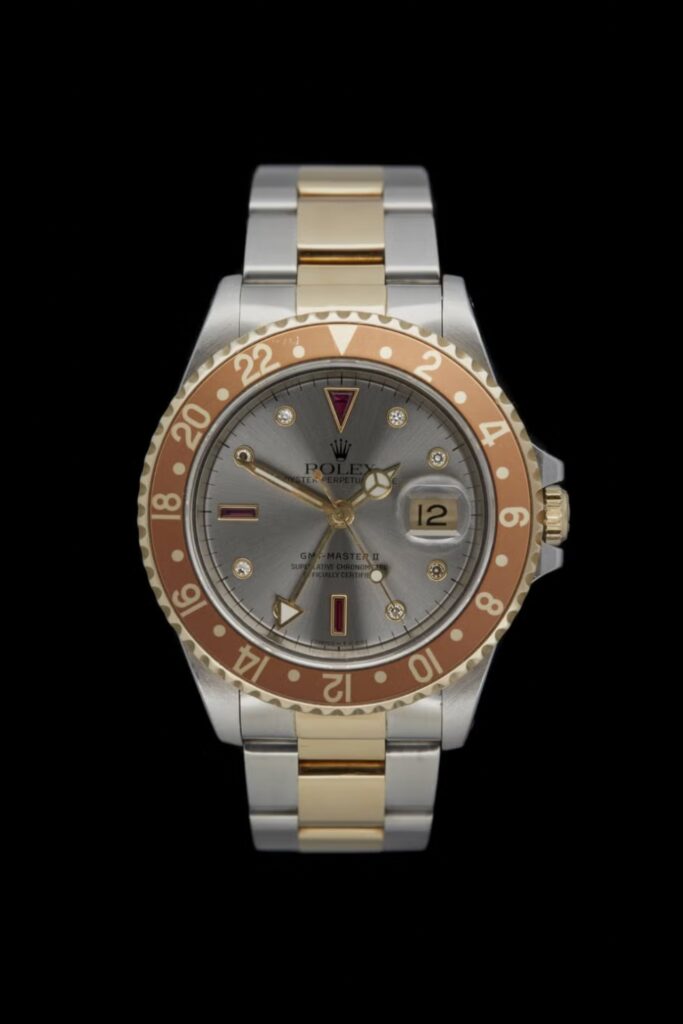
Tell us about the two new sections in the book, on Tiffany dials and “tropical” dials.
So, they’re entirely new. When you handle watches every day, you can get a little bit immune to their impact sometimes, and people don’t necessarily understand what you’re talking about when you get into some of the specific subsections of collecting.
The word “tropical” is now, I think, more widely understood. But there was still sometimes a misunderstanding about whether they were made this way, or how they got this colour.
A “tropical” dial is a rare phenomenon. It has been created naturally through environmental conditions. Rolex never made these watches like that.
There’s a spread in the book showing two watches put together for comparison: the black version, which is how it was made, versus what happened to it in extreme conditions. It doesn’t have to be an actual tropical environment. It basically just means they’ve been a bit bashed about and weathered.
Everyone used to use the word “patina” – but that’s a very Americanised term. I think this “tropical” word is a bit more realistic in terms of what happened to them.
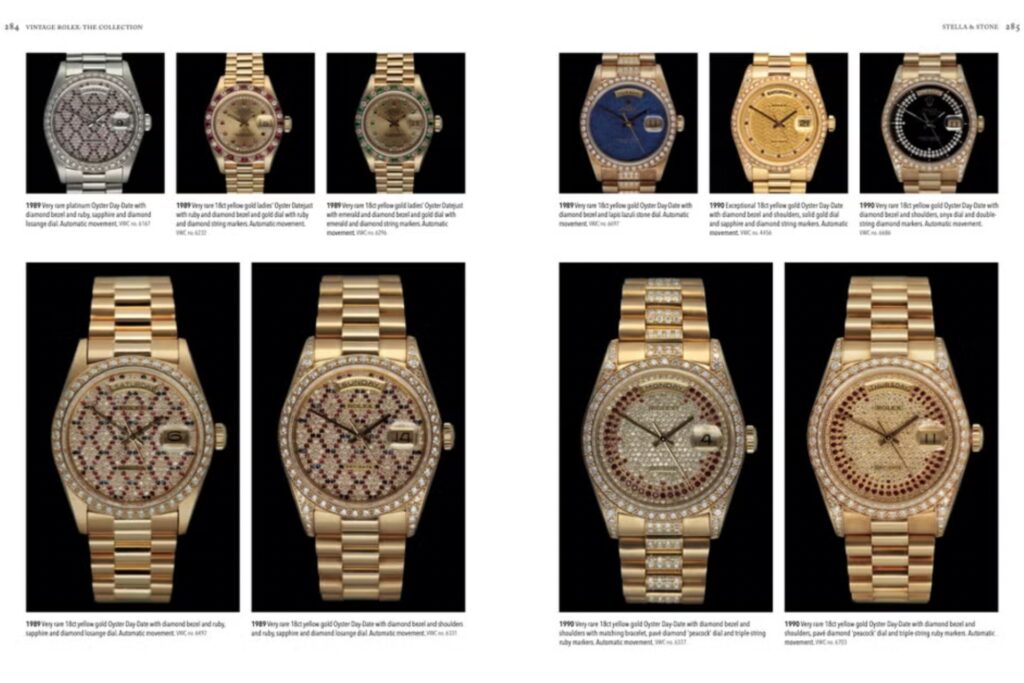
What makes something “tropical” as opposed to something that’s just been trashed?
If you have a watch which is black on black –so black insert, black bezel, black dial – but it’s just a bit smashed around, and nothing’s really changed, it’s just not in great condition. That’s not a tropical dial. But if it’s changed to brown, then it is. So, you get these really, really unique vintage pieces. In vintage Rolex especially it’s very hard to use the word “unique”, because obviously, there is no one unique watch. I mean, yes – there are one or two. But these are unique because no one watch has weathered in the same way.
And they command quite the premium, right?
People now collect them and ask for them – which they didn’t before. It was one of these watch insider terms, which I was using all the time. And I’m obsessed with them because I love how they change in colour. You can pair them with crocodile straps or other different straps, which bring out the colour even more. Obviously, they’re not an “entry-level” watch. They’re quite expensive. They will command a premium of three or four times their original counterpart.
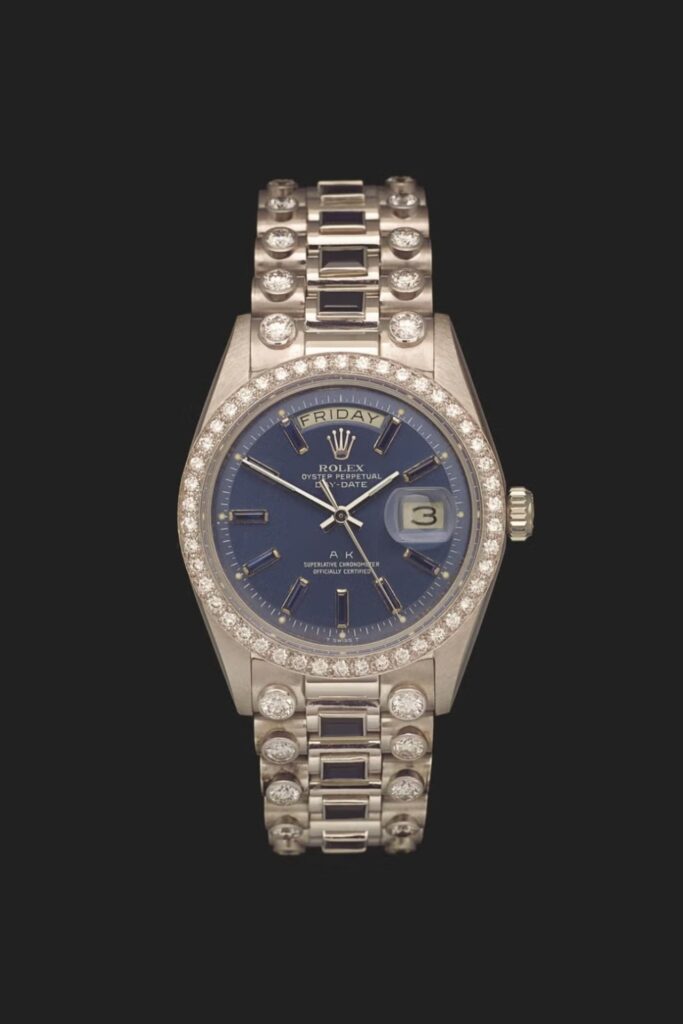
What about the Tiffany & Co. Rolexes?
Tiffany as a brand, in the periods that we cover, is the epitome of luxury. To bring it together with another superbrand like Rolex . . . I would say it’s one of the most epic co-branding exercises in history. Nowadays, it’s common to bring two brands together. But it wasn’t that common back then. And again, with Bruce’s images, he shoots them live. So, when you see four watches on a page together, they’ve been photographed next to each other, in the exact same format. I had them in my hand at the same time, and that’s what they look like. It’s real. You might think it’s Photoshop. But when you start looking at the angles and the reflections, it’s impossible. So, I’m really proud of those.
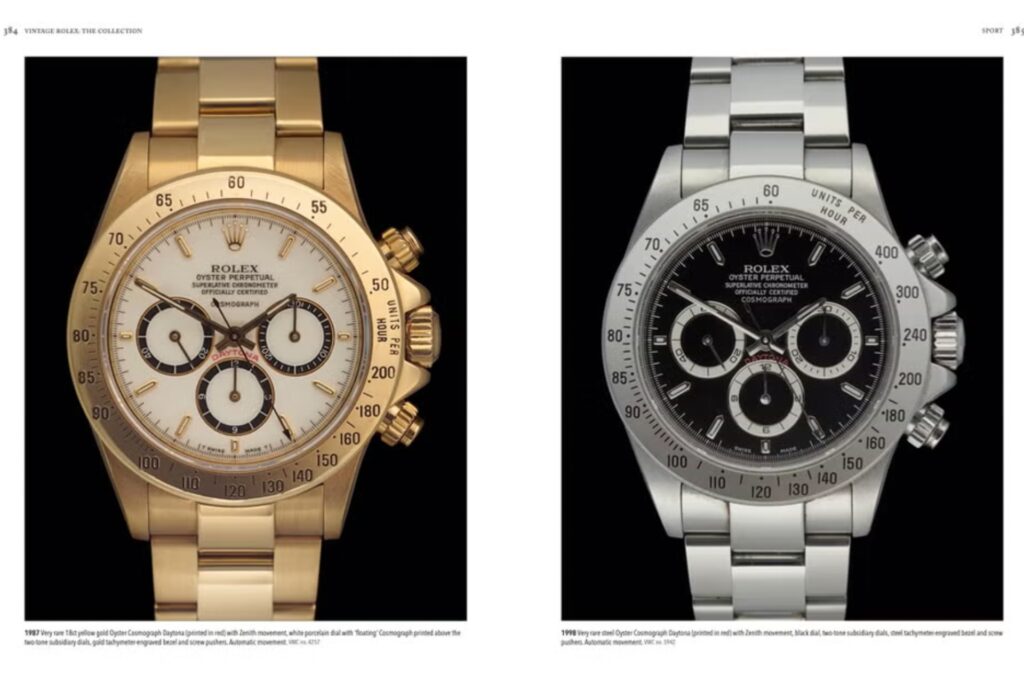
Rolex has recently started selling old watches itself, via it’s Certified Pre-Owned scheme. Is that competition for you?
This area is so complicated, and knowledge is so necessary, that Rolex – and most people – stick to watches that are 10 to 15 years old. So I’m not sure we overlap very much at all. Every time I walk around a boutique, or anywhere I travel, I don’t see collections of the volume that we carry. They don’t have the variety, or the earlier models. They’re what I call ‘”forecourt” watches. You know, you go into Mercedes, and you only get to see the newest ones – two or three years old on the forecourt.
That’s a good comparison.
But the difference with watches is, they’re now selling them at a premium – that’s not how the car market works. I think people have slightly misunderstood why Rolex watches are expensive – in their own shops.
What could other brands learn from Rolex?
Marketing.
You mean in terms of its brand ambassadors?
In terms of everything. How do they continue to be the most coveted brand in the world? It’s extraordinary. Also, they have a quiet arrogance, which is admirable. Take Formula One as an example – they’re above it. They’re not going to bid [after years as the sponsor, this year Rolex ceded the rights to the sport to Tag Heuer]. They’re above it. “If you don’t want us and you want someone else, then goodbye.” When Bernie Ecclestone first negotiated that deal, that was an iconic tie-up. It made absolute sense, historically, for Rolex and Formula One to be together. Now Formula One was so desperate for an extra hundred million, or whatever it was, that it went down a tier in terms of branding. Rolex is not interested in that game, and I admire that.
Wimbledon – all the things they choose to associate with are top of the tree. I think it’s very, very clever. It’s amazing for a brand to permeate the entire world – generations, sexes, nationalities, colours, creeds. I can’t think of anything else at that level so powerful.
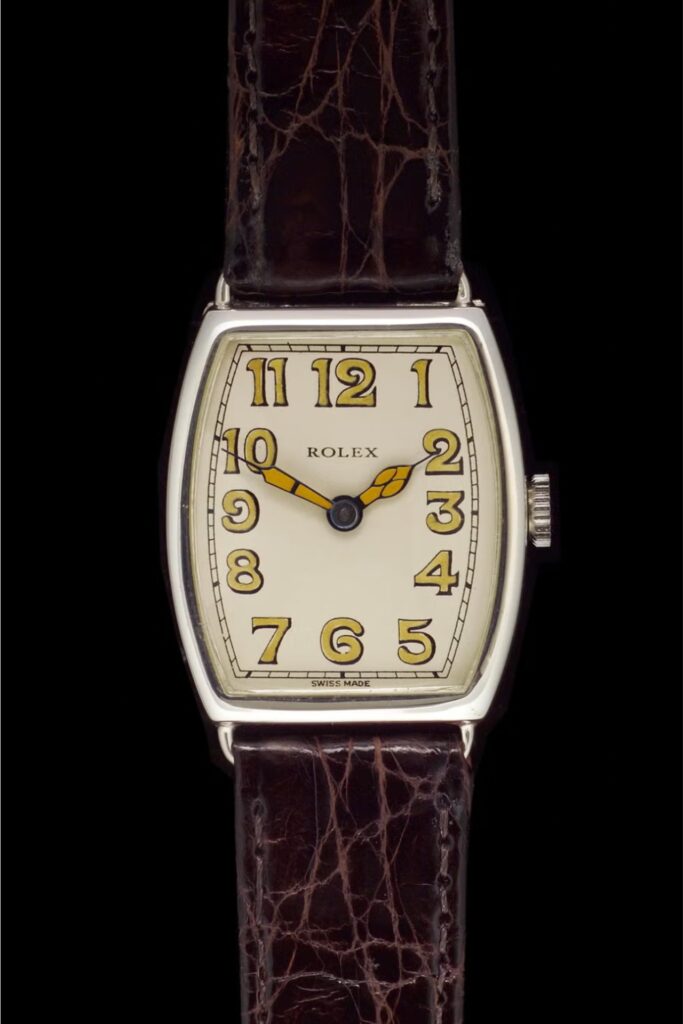
How have you seen the Rolex customer change?
I think the customer is younger. The demographics are different, regionally. In the Middle East, where people are “new obsessed” in everything and they have to have the newest, they’ve come around to understanding that the rarest and more unique is the way forward. So, it’s no longer necessary to flex with a brand-new handbag or watch. The quiet flex is showing something on the wrist that no one else knows about, or has seen before. That’s more intriguing. And that’s for men and women.
And for young people – where an 18-year-old might have once coveted a brand-new watch as their first watch for a birthday or graduation – it’s now very common for that to be replaced by a vintage watch from their birth year. Something that will grow old with them and marks a point in time in life. I think that’s really special.
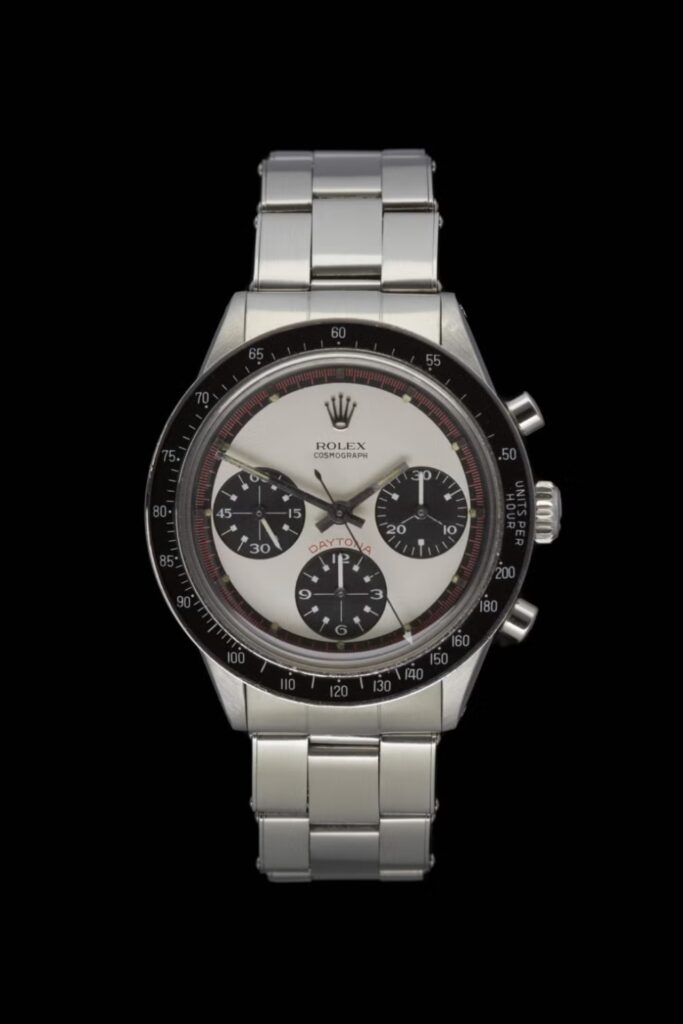
And how have prices changed?
Just “up”. [Laughs]
Go on.
They’ve only gone one way. Now more than ever. And I always say to everybody: the turning point in the vintage market was the sale of Paul Newman’s own “Paul Newman” watch in 2017 [it sold for $17.8 million making it the most expensive wristwatch ever sold at the time].
It seems such a long time ago, but it put vintage Rolex on the front page of every newspaper worldwide in a way that had never been done before. And it did for watches what Elizabeth Taylor did for jewellery. That’s the only comparison I can ever make. They are on a par. Paul Newman is to the watch world – not just to Rolex, to the whole watch world – what Elizabeth Taylor was to jewellery. Because he’s so iconic.
What’s the biggest mistake people make when buying vintage Rolex?
Asking what the rarest watch is.
Because they should just buy what they like?
Yeah. They’re buying something they don’t like, or they’re never going to wear. A major mistake. Fundamentally wrong. In my opinion. When you look at the book, you’re looking at it visually, aren’t you? Going through it going, “Oh, I like that, I don’t like that, oh, that’s odd…” So, if I said to you, the front cover is the rarest watch ever produced, you might say, “Well, I hate purple.” So, what’s the point?
Who’s the most surprising person who’s bought a watch from you?
I think people would be surprised by the breadth of desirability for these pieces. Actors, actresses, politicians, members of royal families worldwide – everyone’s kind of in the same genre of being obsessed. It’s like collecting art, or anything else. It’s really become collectable.
The box of Stella dials in the Stella section is real [a box of 15 gold Day-Dates, above]. I created that for somebody. I helped them get all those tones and colours. But that’s not a one-day job – that’s probably, for this particular person, over 15 years.
So . . . surprising people? That can be down to age. I remember a 13-year-old coming in, absolutely obsessed with watches, and his parents buying him something he would treasure forever. They don’t have to be expensive watches. At the time, it was an Oyster –it might have been £2,000. So that’s surprising. The watch industry as a whole is an interesting one. It’s coveted by so many different people.
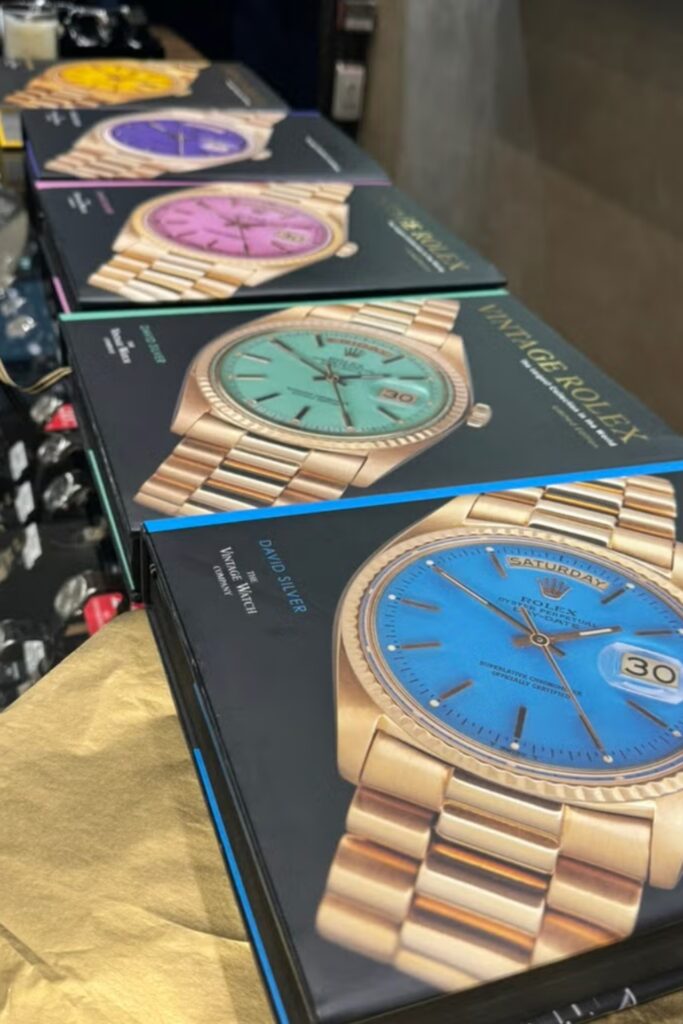
Who’s trickier to deal with: celebrities, hardcore buyers or first-timers with too much cash to spend?
It’s people who obsess about minute details. That’s not to say there’s anything wrong with that – but they’re not necessarily my customer. People have to understand that this store and collection is a hand-picked, hand-curated selection of watches for an audience that understands style and design. It’s not about the “engine” [ie: the movement] so much here.
If you’re too obsessed with those details, I don’t think you’re going to enjoy the experience as much as someone else being here. Because we’re not that type of store. Here, it really is about: “Have you seen this colour before?”
People will spend five minutes buying a watch, then an hour choosing the colour of the strap that matches identically their wardrobe. Not to say that in a comical way – but that’s the truth.
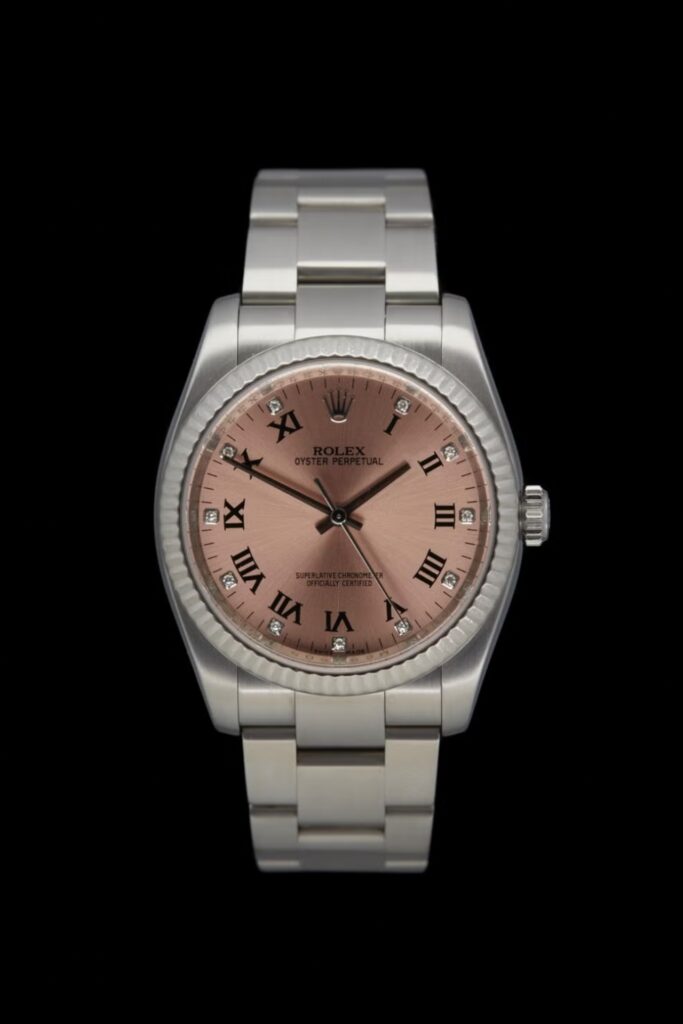
What’s the largest amount of money you’ve seen change hands in a single day in the shop?
[Laughs] You know . . . a jaw-dropping amount.
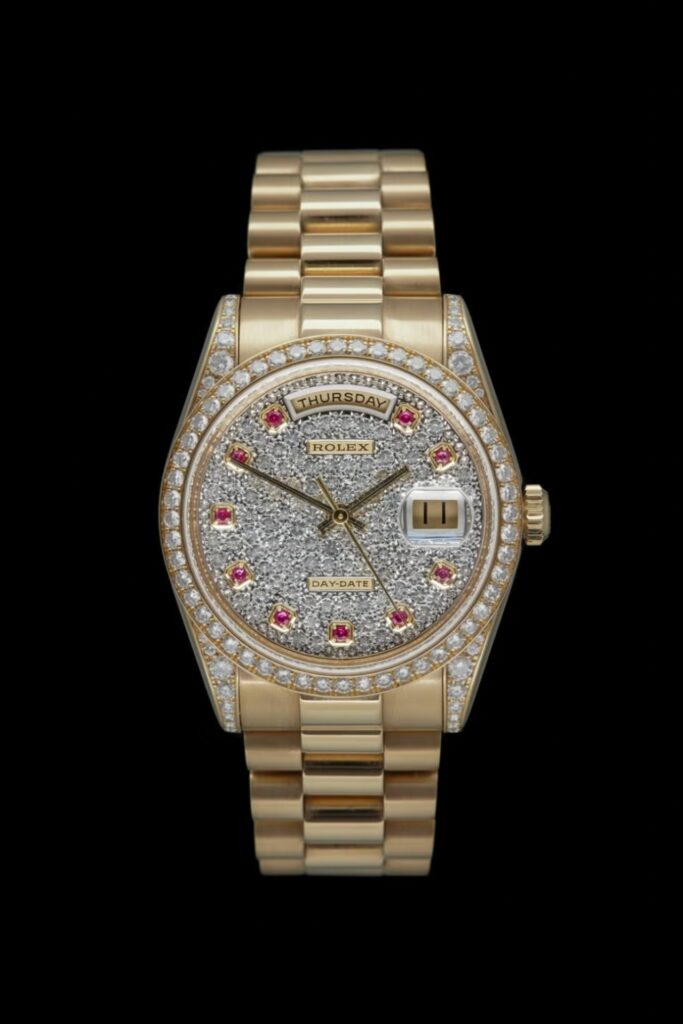
Yes?
Okay – I’ll put it historically. I remember writing an invoice for my then most expensive watch – maybe 20 years ago. I think it was £19,500. My wrist was shaking. Those moments exist. And they push you, drive you to understand the ability to sell luxury products – and upgrade. That’s something we’ve knowingly done over the last five years, since the last book – we’ve upgraded the collection. We are operating at a higher level now than we used to, in terms of individual pieces, rarity, and so on. It is now much more commonplace for us to sell watches at £100,000 each than it was five years ago. And people buy more than one.
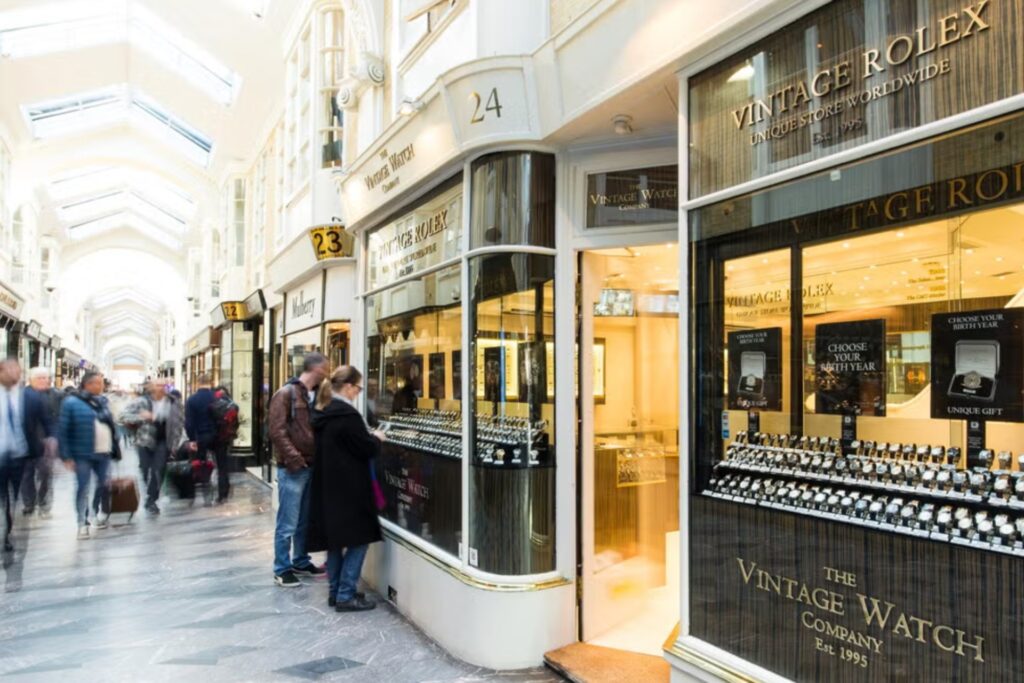
Is there a model you personally consider ugly, but you stock it because it does well?
There are things we do not do. The Cellini range, for example, from the earlier period – is something that’s not popular. [The underloved Cellini dress watch was introduced in 1968, and finally retired in 2022/3.]
Then the quartz era. Generally, quartz and Rolex never sat well together. People didn’t want to buy a battery-powered watch from a fine watchmaker.
It wasn’t the shape – it was the movement. Now they’ve created that shape again in the Land-Dweller series, and marketed it brilliantly – it was on Roger Federer’s wrist the week before it was even released. Genius. Do I like it? I don’t know – I haven’t worn it. Do I like the quartz versions? No. Will I stock them? No.
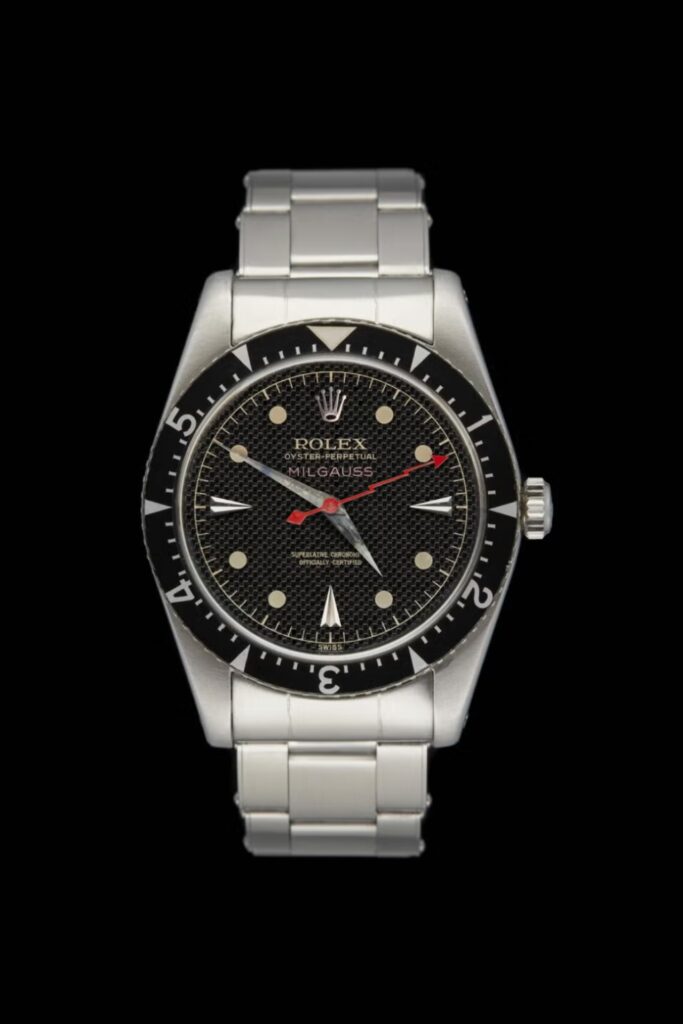
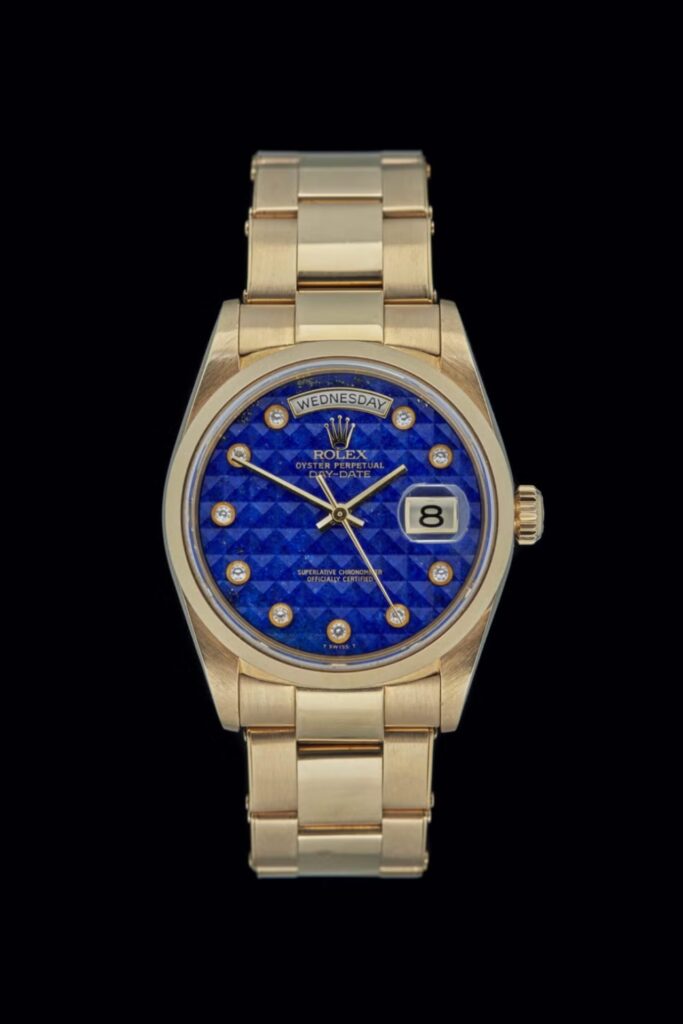
What’s the tallest tale a customer has told you, when trying to sell you a watch?
It’s not so much a tale – but I had this extraordinary experience that always stands out in my mind. An elderly lady came in with many, many Sainsbury’s bags – things to sell, loads of watches. And with the greatest humility, I’m standing there, watching each bag be opened, with each watch coming out wrapped in tissue. Endless. Unfortunately, each one being pretty much worthless.
Then, after about 25 watches, I said, “I’m not 100 per cent sure there’s going to be anything – we only deal in Rolex.” And she said, “Well, I think there is something in the bottom of this bag.” She pulled out one of the rarest watches ever – a military-issued Submariner. Someone in her family must’ve been in the forces. They’re extremely rare, marked with a ‘T’ letter written on the base of the dial, on a military strap.
So that was extraordinary. Patience is the buzzword. Always let people waste your time – because you never know. She ended up receiving a life-changing amount of money, and we had to sit down on a chair and have a cup of tea.
Is there a type of customer you can tell will be a nightmare even before they open their mouth?
I’ll be honest with you – the people around the people are the problem. So, if you are expecting someone to come, and they’re a “notable”, meeting them is often a joy. But it’s the people around them, who somehow assume fame on their behalf. You’ll know this more than anyone.
The PRs and the handlers.
Exactly. They’re trying to create that allure. But if you can’t come to the store, we’re not interested. That’s been a discipline. We’ve only ever left the shop once, in 30 years, to visit somebody that we wanted to meet. Otherwise, heads of state, royalty, President Clinton and his huge cavalcade can roll down Burlington Arcade.
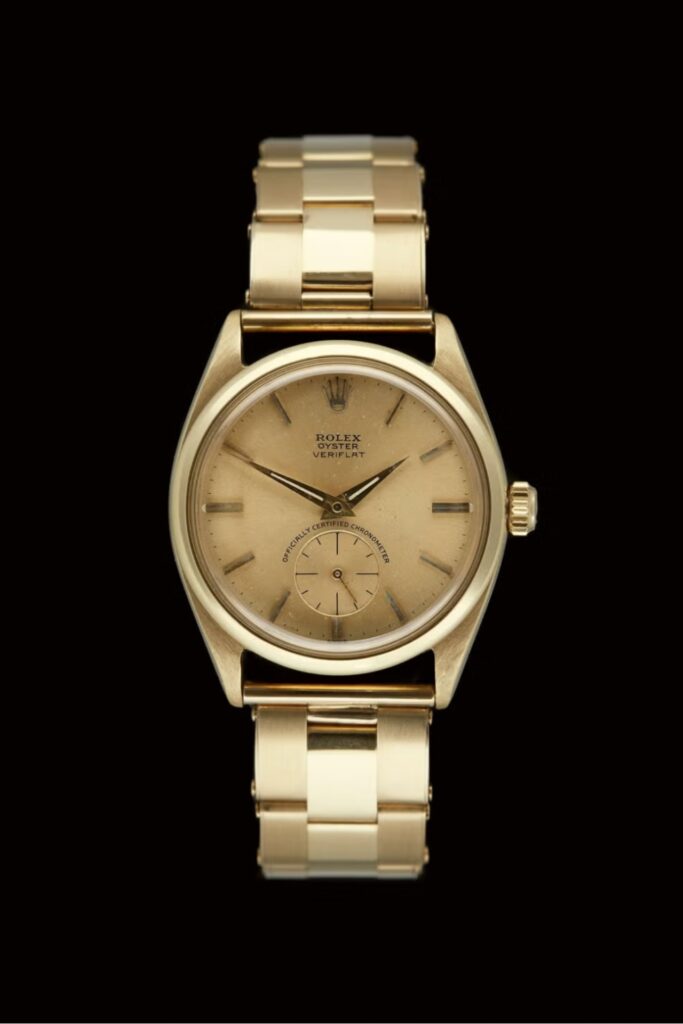
And that’s happened?
Many times. Most Christmases.
You know I’m going to ask you who the person you left the shop to meet was.
[Pause] Jennifer Aniston.
I wasn’t expecting that answer.
When I was very young.
In London?
In the Dorchester. And she opened the door to her suite herself.
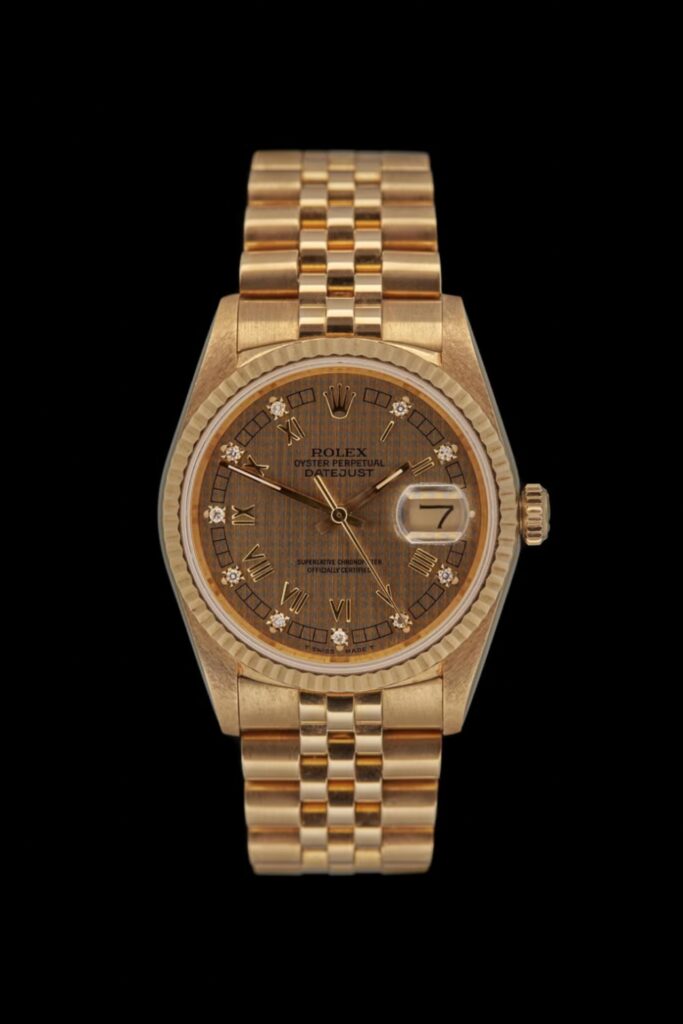
Apart from money, what’s the most insane thing someone’s offered you as part of a deal for a watch?
[Laughs] Probably two weeks in their villa.
Did you say yes?
No! We didn’t want to get involved in that kind of deal. Our view is that they should throw that in anyway, for being allowed to buy something extremely rare.
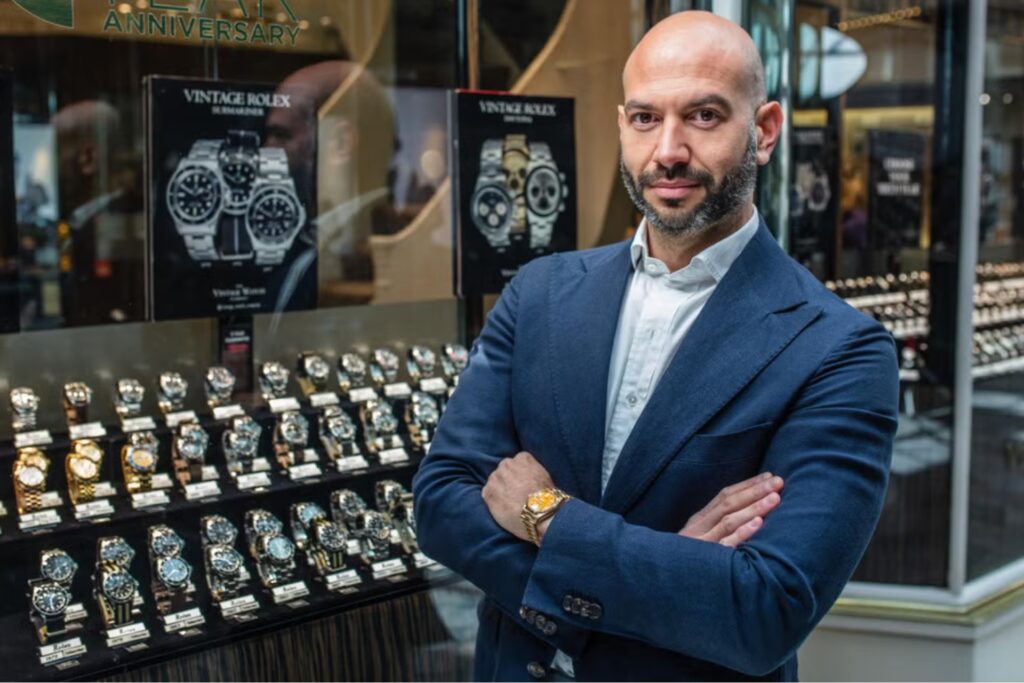
And you’re sticking with Rolex?
I have the passion more than ever. What excites me is how many people are entering the market now. That constant “who’s going to walk through the door today?” vibe. We’re a mini, mini, mini fraction of the market. That’s what the books do – expose me and the store to a new audience. And I’m lucky and grateful for that. The book is sitting in homes of people who’ve never bought from me – and maybe never will – and still admire and appreciate what we do.
When the book is stacked on top of Tom Ford, or other icons I admire, that’s something quite special.
So I feel very proud.
This story first appeared on Esquire UK.
Related:




